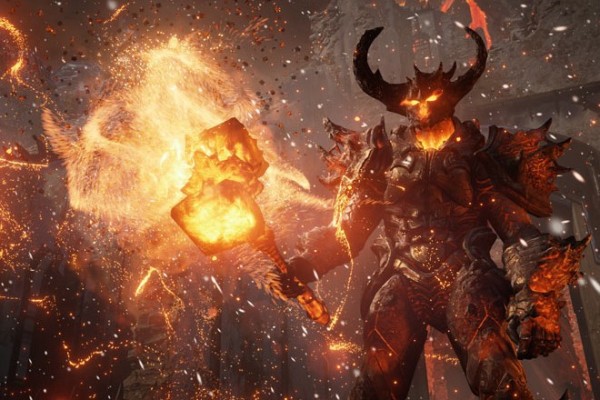After seeing how stories have changed in video games over the past few years there’s always been one element that has driven the progression of story: the game engine.
Beginning as the nut and bolts of the game they’ve now grown into more than simple world and character structures. They now offer realistic physics, deeper worlds and more impressive graphics. And with newer and stronger engines on the way they’re looking to get even better.

Graphics were the first and the most consistently to be improved. Ever since the inception of the video game each console generation has improved upon its graphics rapidly.
Beginning with our 8-bit forefathers they were nothing more than simple coding. There were no shared third party engines, just coding that had to be built from the ground up for each game. Most games during the 80’s used this method.
Once games entered the 3D realm however in the late 1990’s and early 2000’s several companies began their own in house game engines. Criterion Renderware made its mark when it was used for Grand Theft Auto III.
The tech was mainly used to deal with graphic programming issues on the PS2. Though it eventually was pulled from the market when EA bought Criterion, this was far from the end for third party middleware.

Much of this has developed into the middleware engines today like Havok and Bink video. Their logos can be found on the back of nearly every game box to date. Even Epic’s mighty Unreal Engine has become a major player in the third party market.
Since then games have featured more intense physics, gorgeous details added to graphics, and vastly improved AI from NPC’s. Some of the first to use these new engines were games like Chronicles of Riddick: Escape from Butchers Bay put new physics into their enemies death animations.
Havok also provided games with these same ragdoll effects like Max Payne 2. Though reactions were still over-the-top with enemies usually flying through air from a simple pistol hit it brought games in more realistic direction.
While many of these are sometimes bought from publishers many more who have the money have taken up their own in-house engines and have delivered better results. Rockstar games RAGE and Euphoria engines have made shooting bad guys seem highly realistic.
Id Software’s own id Tech 5 provided the extremely fast 60 fps frame rate making the game extraordinarily fast paced to play though it still worked in open GL.

As this generation comes to an end even more improved engines are to be expected in the future. Epic Games Unreal Engine 4 looks to provide even more intense graphics and textures.
It’s not photorealism thankfully and it looks to provide more power by producing one million particles at once without any hit to game performance. Pretty ambitious.
We’ll have to wait to see more before we can truly see how effective the engine will be, but with a few screens and a trailer demonstrating its power Epic could be bringing us into the next generation of gaming and their engines.
With such a complex future for game engines it’s easy to forget how simple these engines used to be.
As we move toward that future I find myself appreciating how these programs filled with nothing but numbers and data, have created some of the most entertaining games in history and hopefully more of that history will be made in the coming months.
Sources:
Senior Stiv is at least 32-bit level writer that loves gaming history, check out some of his Overdue Reviews here. If you prefer current and up to date, follow him on Twitter here.
